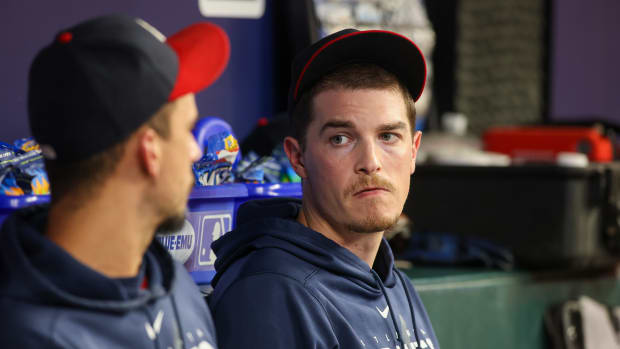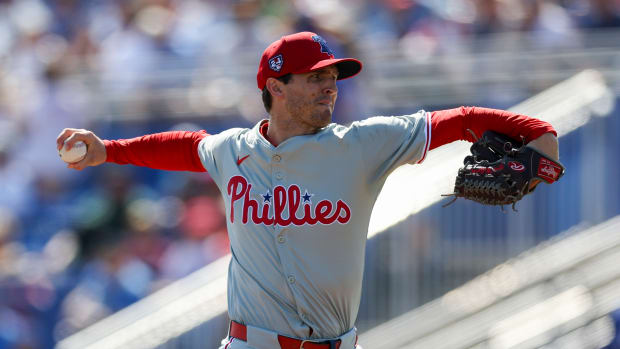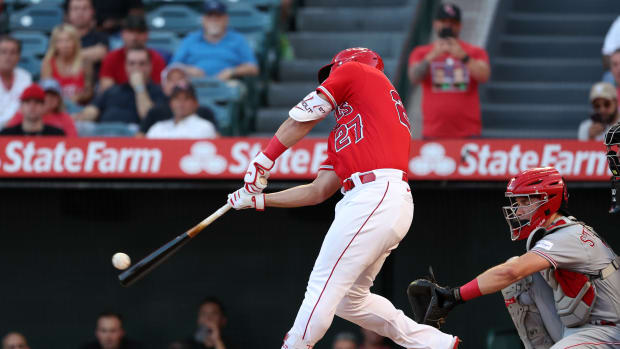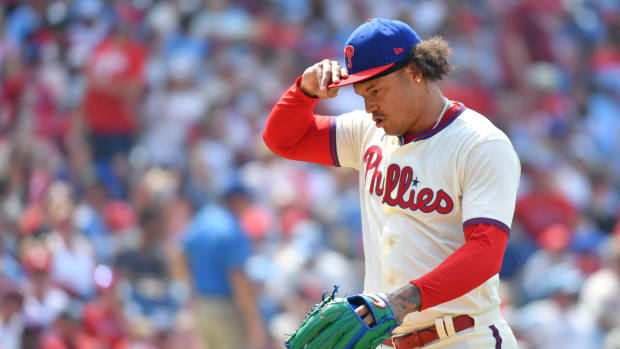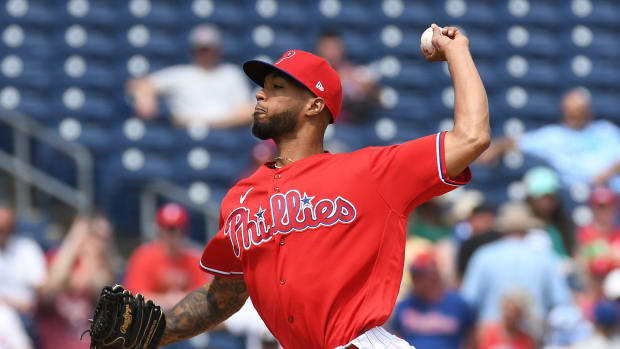Phillies Legends: Sam Thompson
In 1884, a 24-year-old Sam Thompson was working as a carpenter in his hometown of Danville, Indiana. In July of that year, Thompson was fixing up someone’s roof in town when the Indianapolis Hoosiers came to Danville for a quick exhibition game against Danville’s local players. At this time, it was common for professional teams to scrimmage local teams while they waited for their next train to come in.
The Mayor of Danville told Hoosiers manager, Dan O’Leary, about Thompson. The Mayor claimed that the Danville locals would win if ‘Big Sam’ was playing for them. O’Leary had to see for himself if Thompson was truly all that, so he went into town and found him working on the roof.
Thompson explained to O’Leary that he would love to play in the scrimmage, but couldn’t because he needed the $2.50 he was going to earn from finishing the roof. O’Leary offered him $2.50 (some reports claim he offered $5.00) to drop the job and go play ball. So, that’s what Thompson did.
Big Sam went on to hit two home runs in that game and help the Danville locals beat Indianapolis by a score of 9-0. Thompson was signed on the spot and he left Danville to play for the Hoosiers in the Northwestern League.
It wasn’t long before the league completely disbanded, but Thompson and many of his teammates performed well enough to get signed by the Detroit Wolverines in the Major Leagues.
Thompson was very large and intimidating in stature. He stood at 6’2” and weighed roughly 210 pounds, which earned him the nickname, ‘Big Sam.’ He was much larger than his teammates, and the Wolverines didn’t have a big enough jersey to fit him. In his first ever at-bat with the Wolverines, Thompson split his pants while legging out a double. From that point on, he became an immediate fan favorite in Detroit.
Thompson only spent four seasons in Detroit before the team fizzled out of existence. Immediately, the Philadelphia Quakers (Phillies) would pounce at the opportunity to grab the dominant hitter and reliable fielder. Thompson would patrol the outfield with the likes of Ed Delahanty and Billy Hamilton, two other Phillies Hall of Famers.
Their star power would help bring national attention to the Phillies organization, and be the best trio of outfielders the Phillies ever had.
Thompson had an incredible 10-year career with the Phillies, slashing .334/.389/.509 with an .897 OPS. The man could hit for average, and especially hit for power in a time known as the ‘dead-ball era.’
Thompson’s career numbers are absolutely staggering. Let’s take a look at some of those achievements:
- Inducted into the Baseball Hall of Fame (1974)
- 19th century single season RBI record - 166
- First player to hit 20 homers and steal 20 bags in a season (1889)
- Highest RBI per game rate in MLB history - 0.921
- Led the NL three times in hits, two times in doubles, and once in triples
- First player with 200 hits in a season (1887)
- First lefty batter to hit 20 home runs in a season
- Most RBI in a single month in MLB history - 61
- Eight straight seasons scoring 100 runs (1889-1896)
Thompson’s reliability at both the plate and in the field made him such a big threat. His career .934 fielding percentage in right field was well over the league average of outfielders during that span (.909).
He was voted into the National Baseball Hall of Fame by the Veterans Committee in 1974, 52 years after his death. He was one of the game's best players from the 19th century, and deserves every bit of recognition he can get.
More From SI's Inside The Phillies:
- How Should the Phillies Plot Their Offseason Plans?
- Season in Review: Andrew McCutchen
- Arbitration Projections: Who Will the Phillies Keep?
Make sure to follow Inside the Phillies on Facebook and Twitter!

